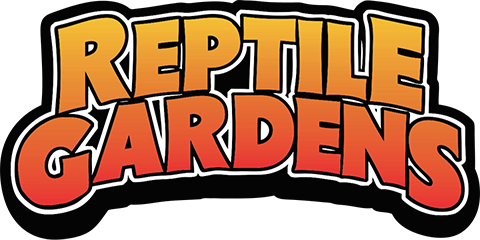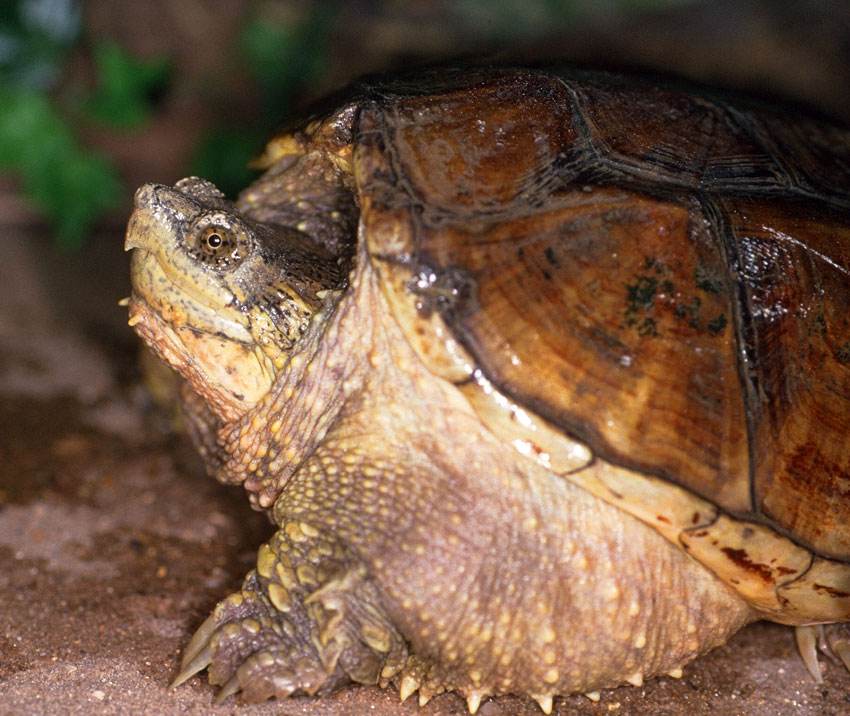South Dakota Turtles
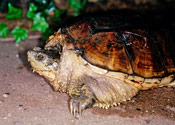
Common Snapping Turtle
(Chelydra serpentina)
Found throughout South Dakota, Snapping Turtles are known for their aggressive dispositions when out of the water. The average South Dakota snapper has a shell that is 12 inches long and weighs around 12 pounds. The record weight for a snapper caught in South Dakota is 44 pounds. The biggest Common Snapping Turtle recorded in the US weighed in at 62 pounds and measured less than 24 inches long.
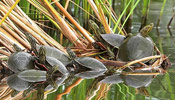
Western Painted Turtle
(Chrysemys picta belli)
The painted turtle is one of the wetland's most common reptiles. Found throughout South Dakota, this animal can be easily identified by its colorful belly (also known as the plastron), although they can be very shy and reclusive. Like many turtles, it hunts for food in the water.
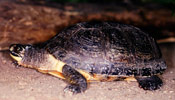
Blanding's Turtle
(Emydoidea blandingii)
The Blanding's Turtle is a medium-sized semi-aquatic turtle with an average shell length of approximately seven to nine inches and a maximum length of 10 inches. A distinguishing feature of this turtle is the bright yellow chin and throat, and its domed shell. This is not a native South Dakota species, but there are a few isolated records of them being spotted in one place in southeastern South Dakota.
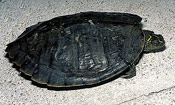
False Map Turtle
(Graptemys p. pseudogeographica)
Also known as "sawback" turtles because their saw-tooth edges resemble the teeth of a saw blade, these turtles are highly aquatic and can be found along the banks of the Missouri River. They are rather shy and skittish, and escape potential danger by entering the water.
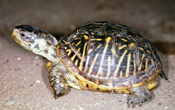
Ornate Box Turtle
(Terrapene ornate)
The Western box turtle is 4-5 inches long with a dark brown or black flattened-dome shell decorated with bright yellow lines that radiate to form a starburst pattern. They are known as timid creatures and often retreat into their shells for protection. They have a small range in south-central South Dakota.
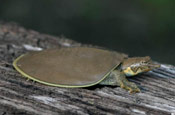
Midland Smooth Softshell
(Apalone m. mutica)
Smooth Softshell Turtles are highly aquatic and can be found along the banks of the Missouri River. They are most recognized by the appearance of their outer shell - it looks like a pancake, as it is completely smooth, flat, and leathery with very flexible edges. Their nose has no nostril ridge, and tapers to a point, resembling a snorkel.
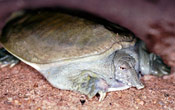
Western Spiny Softshell
(Apalone spinifera hartwegi)
The outer shell of a Spiny Softshell Turtle feels like sandpaper. In adult females, the shell may be smooth, but there are several large spines or cone-like projections at the front of the shell. Their nose has nostril ridges, and tapers to a point and resembles a snorkel. They can be found along tributaries of the Missouri River in central to southeastern South Dakota, as well as the western part of the state.

There are a variety of turtles in South Dakota. Stop by Reptile Gardens and visit our Sky Dome and stroll around the main level to see free-roaming turtles, birds, frogs, and more!
